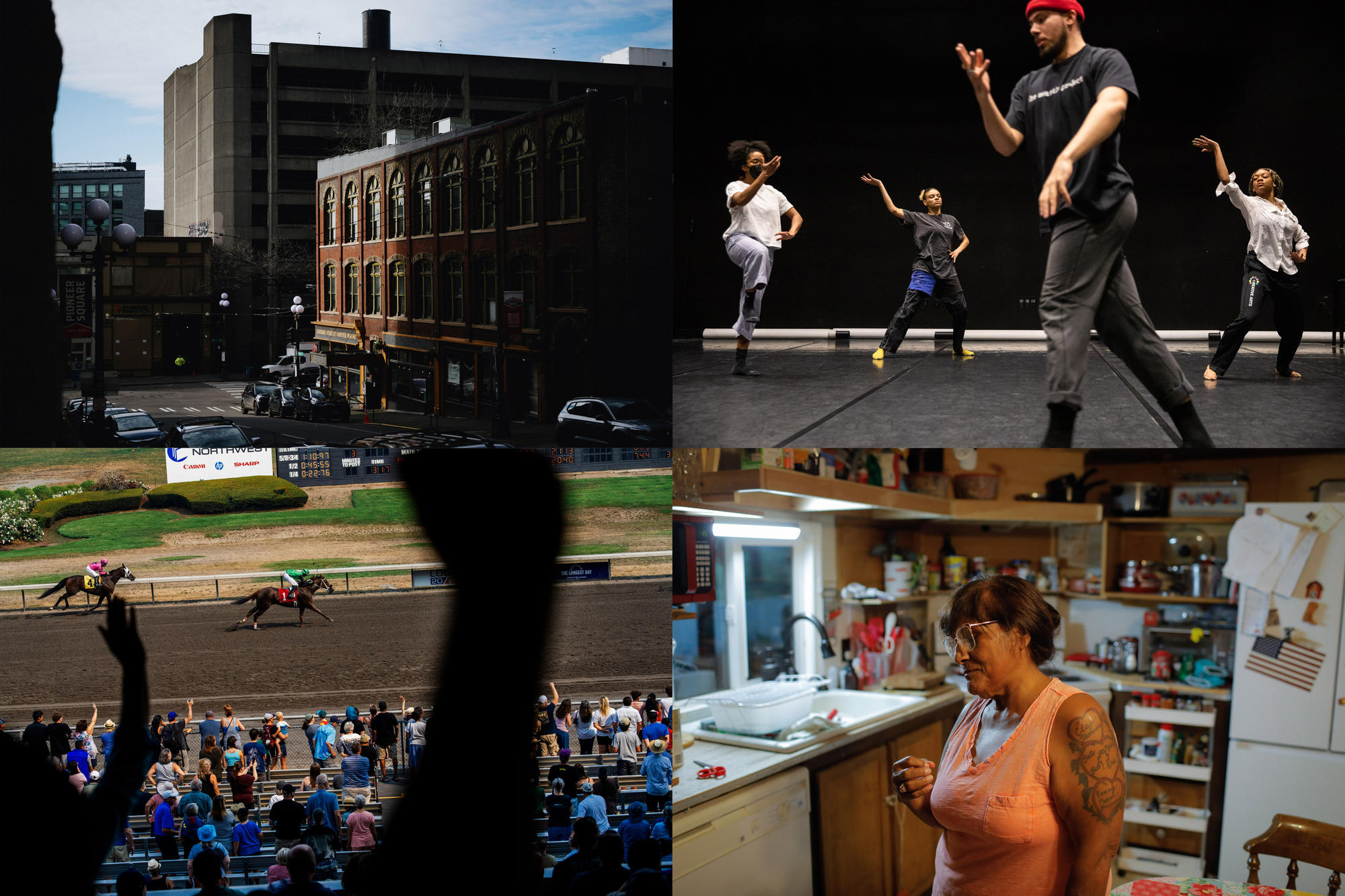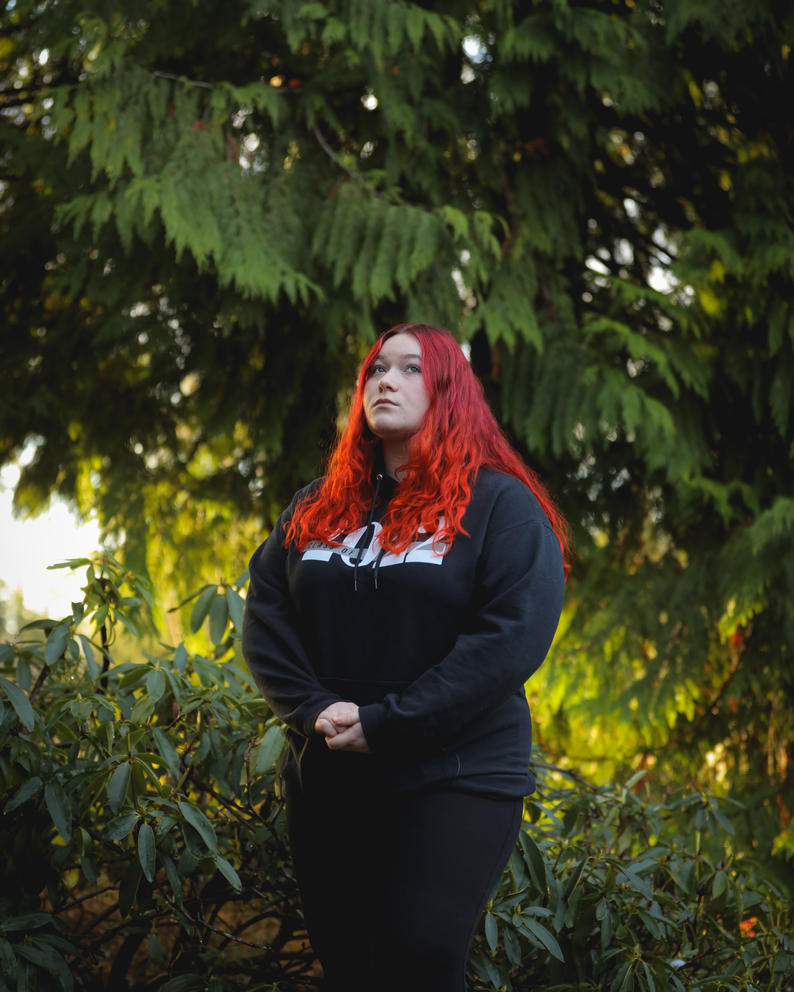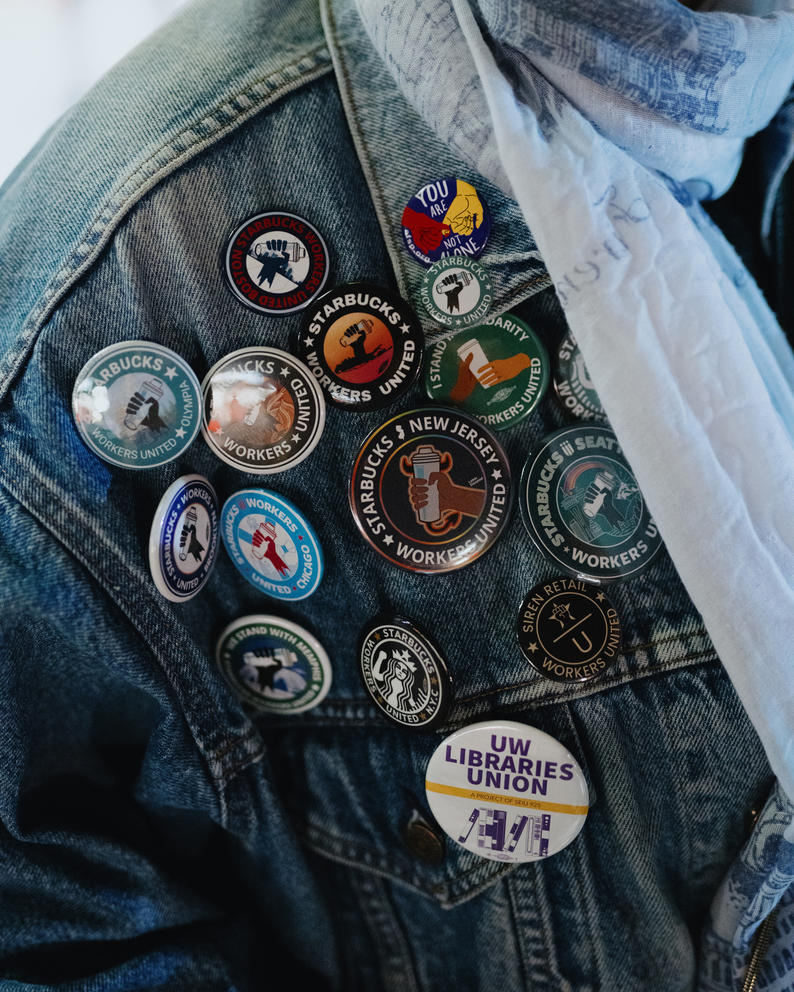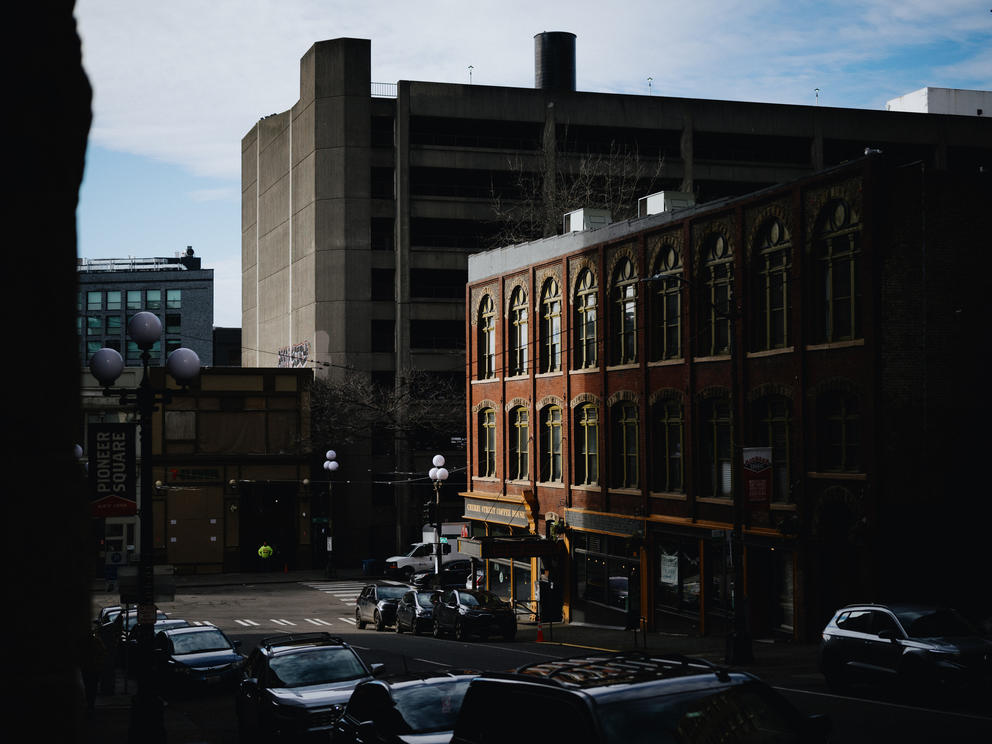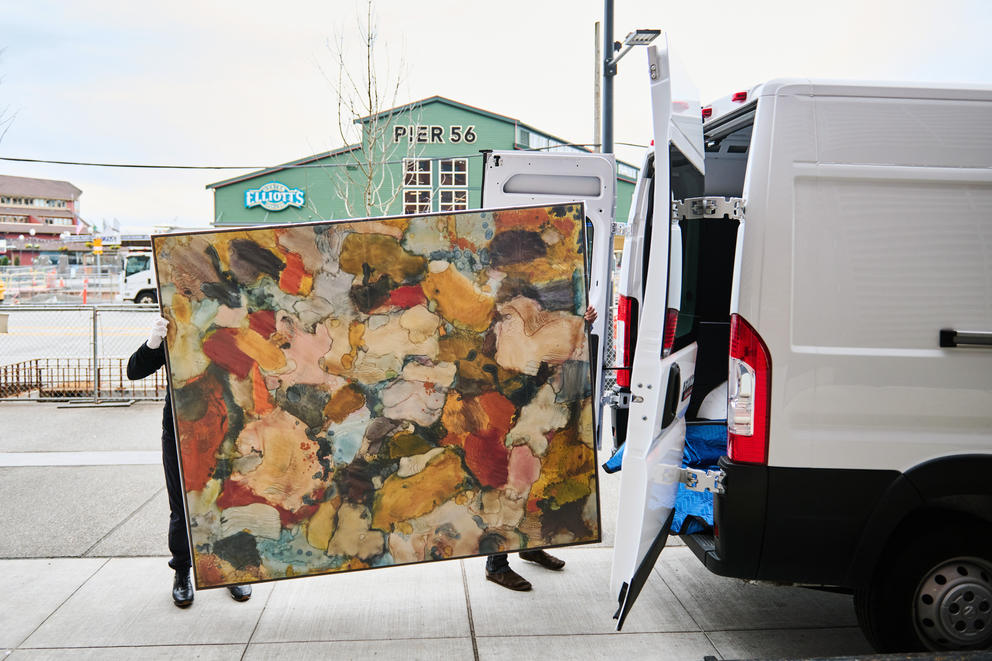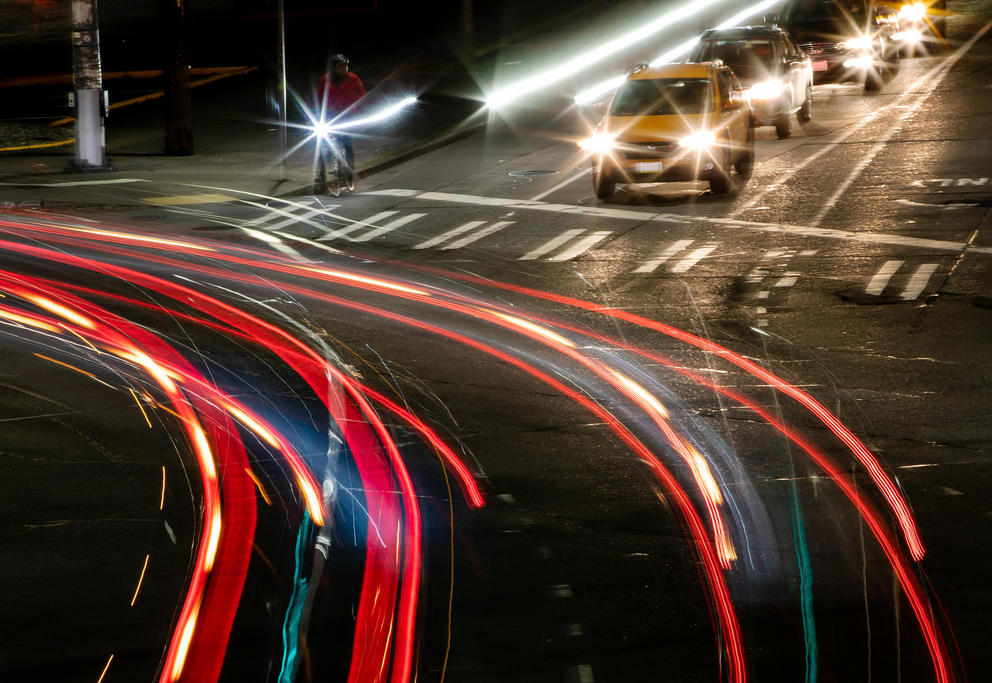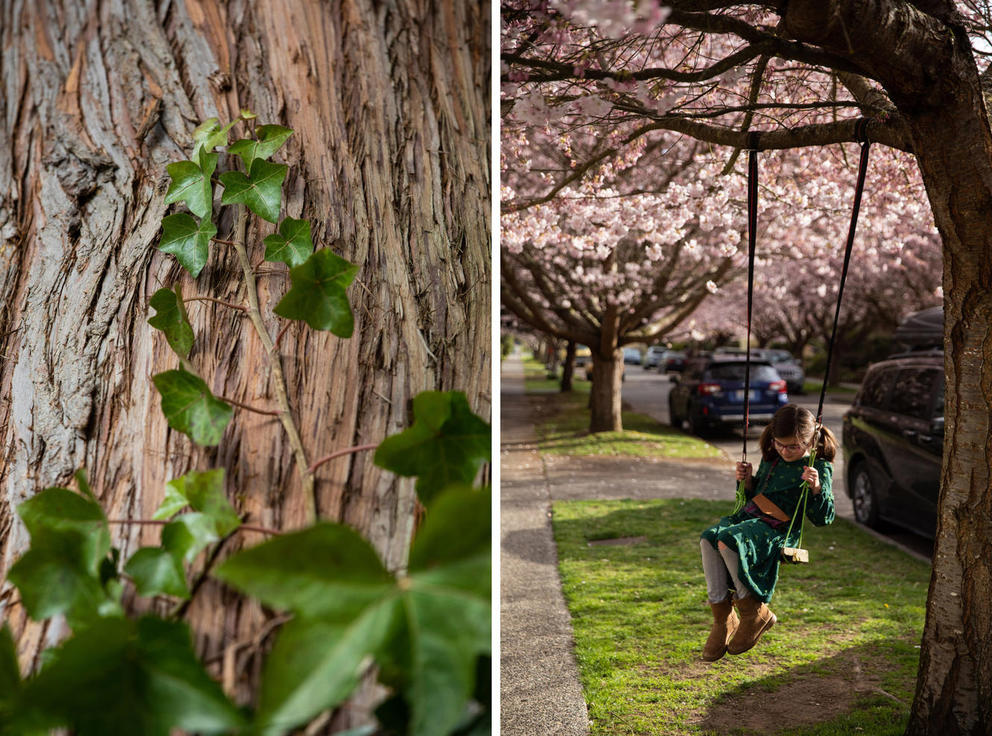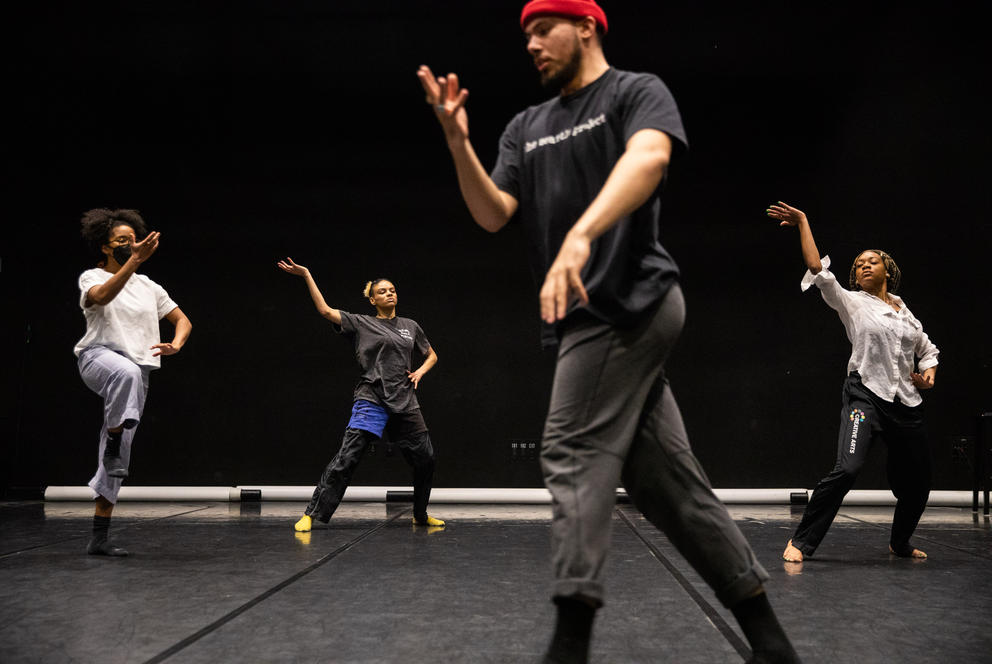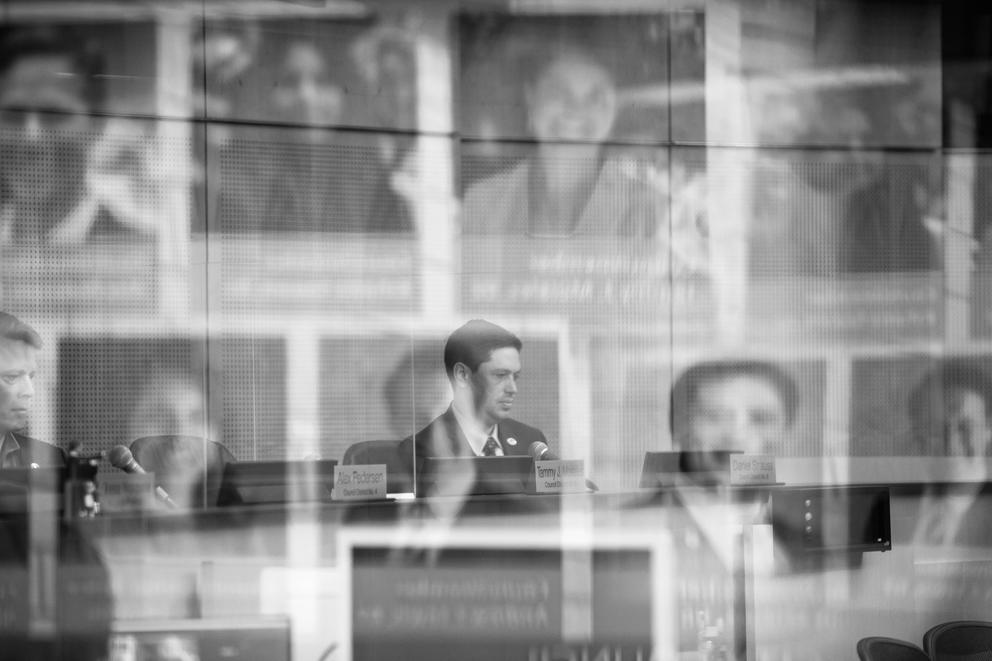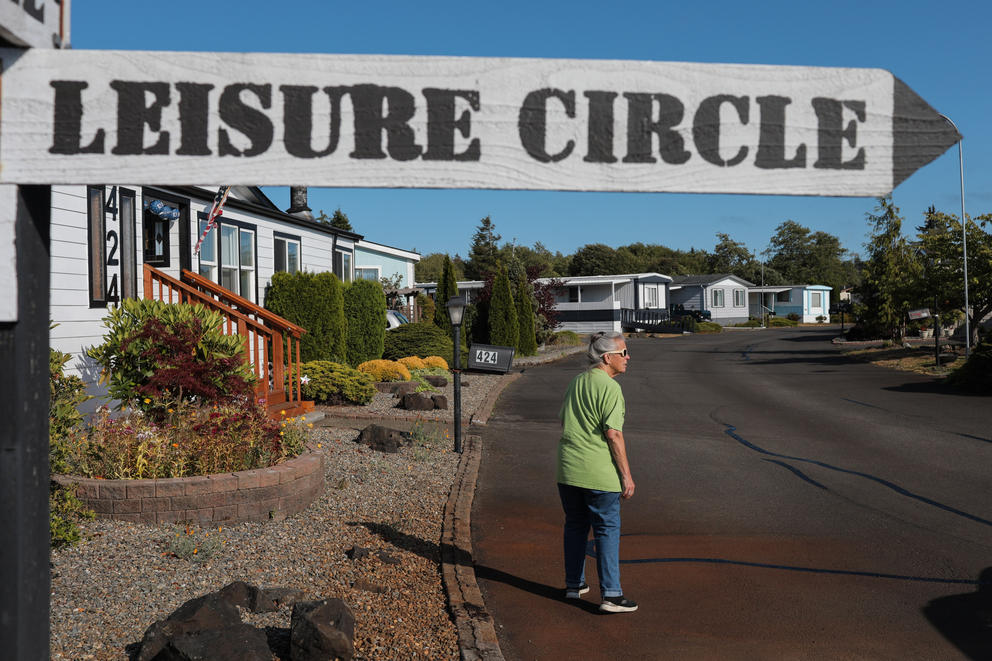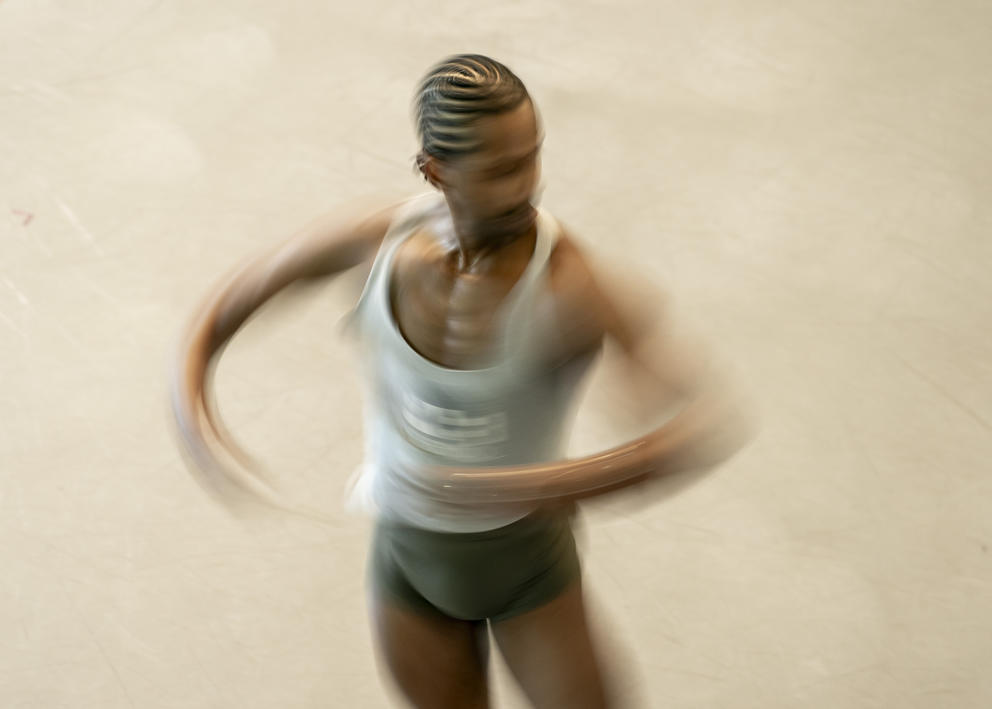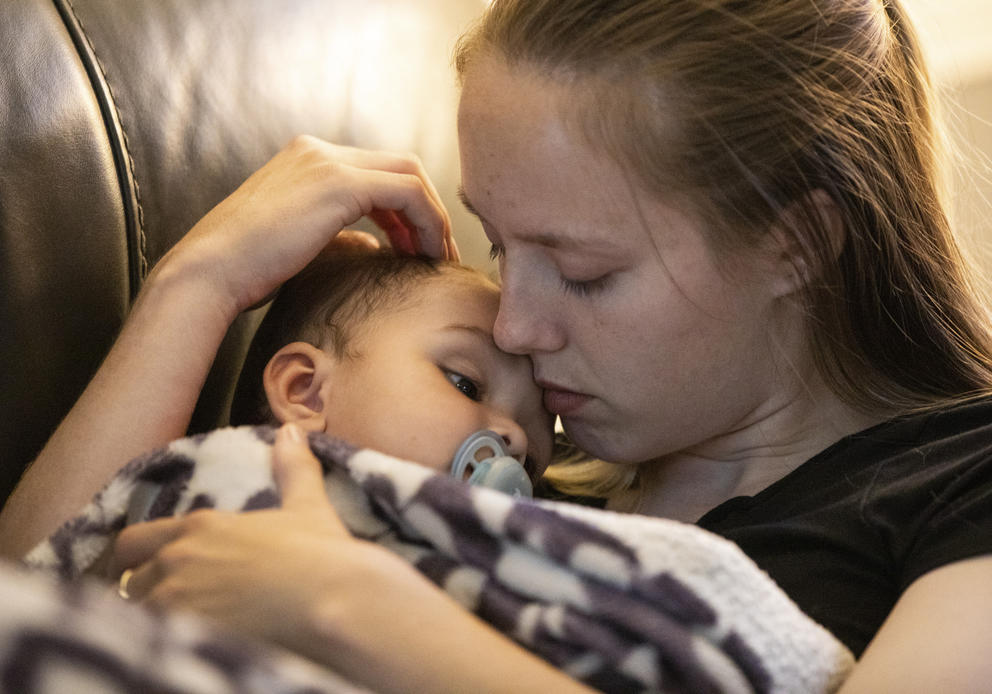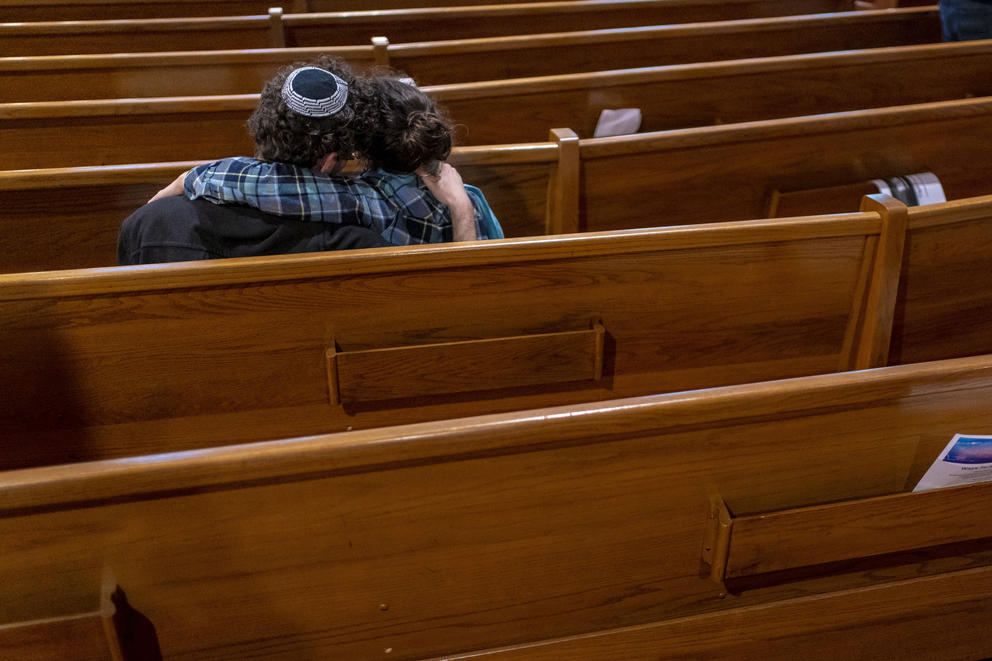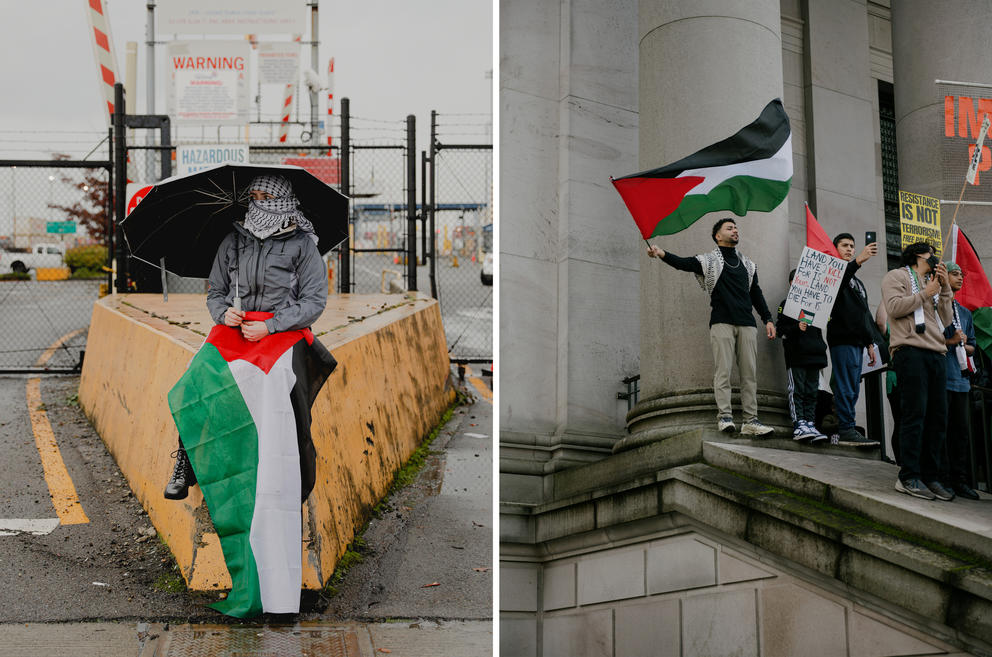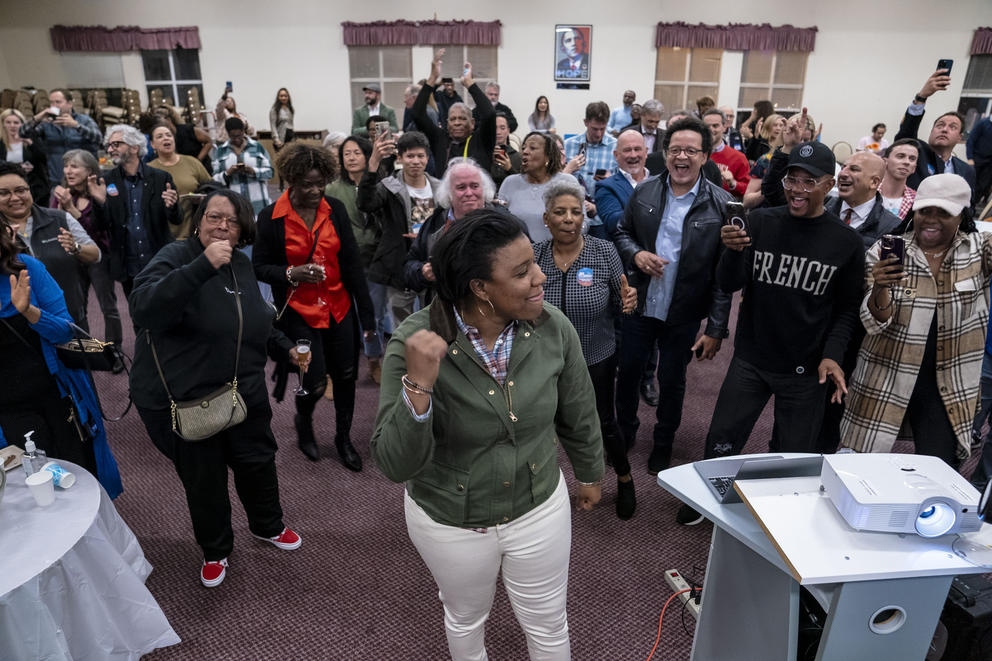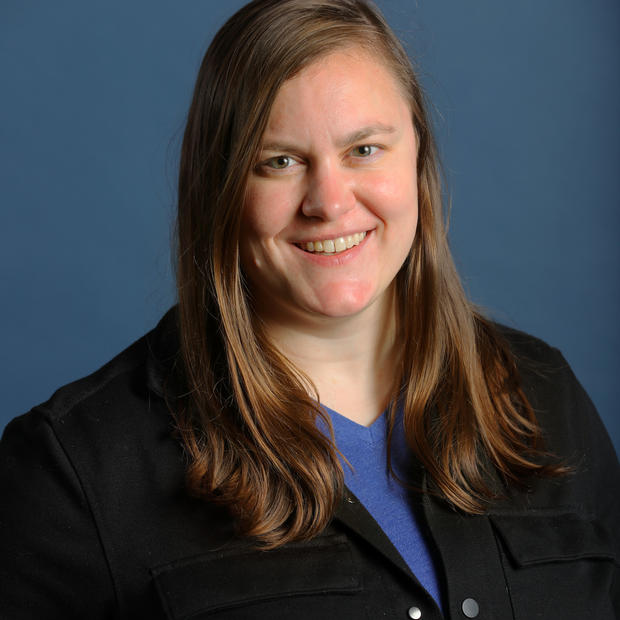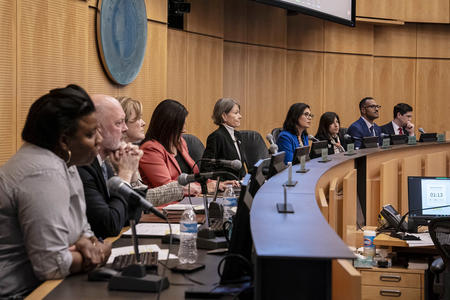Alongside our Washington Recovery Watch and Investigations teams, we dug deep and followed the money, tracing the effects of millions in state and federal pandemic relief funds dispersed across the state. We also documented the ways people have banded together to improve their circumstances, from unionizing Starbucks employees to mobile home park residents who are teaming up to fight economic eviction.
We witnessed the triumphs of those who pushed themselves to achieve hard-won goals: a cyclist who biked every street in Seattle. The long-awaited introduction of Seattle’s first official Dykes on Bikes chapter. A group of burned-out nurses who made the leap to new careers.
In the arts world, we gave you glimpses into a few of Seattle’s numerous dance groups, from the Pacific Northwest Ballet to Dance Church. And we debuted our second season of Black Arts Legacies with a new collection of 15 celebrated artists.
It was a year of change and uncertainty for the Crosscut staff as well due to staffing changes that required us to rely even more on our talented roster of contributing photographers. Staff photographer Amanda Snyder shifted to our video team, but not before completing her final photo project, an intimate look into the lives of incarcerated mothers in Washington’s unique Residential Parenting Program, where pregnant inmates can stay with their babies in a special unit.
These are the photos that stuck with us from the stories that defined our year.
In January, Crosscut reported on the unreliable or nonexistent internet service in rural communities across the state. Forced to attend school from home during the pandemic, many students struggled without consistent internet access. Much of Katelin Rayment’s final years at Elma High School were experienced from home due to COVID-19 closures. Without reliable internet service at her house, it became a constant battle to finish coursework and keep up with her classes. She would do homework in her mom’s car, or outside the library where she could get a good-enough cell phone signal to finish assignments. (Genna Martin/Crosscut)
Amanda Snyder and Genna Martin finished our Festivities in Focus photo series early this year, which highlighted our region’s religious holidays and cultural celebrations. At St. Thomas Orthodox Church in Snohomish, a congregation celebrated the Feast of Theophany, a Christian Orthodox holiday marking the baptism of Jesus, January 8. Elise Dowell, pictured here, lifted her daughter Juliana, 1, to kiss an icon during the Divine Liturgy. (Genna Martin/Crosscut)
For the final installation of the Festivities in Focus photo series, Amanda Snyder photographed the Ethiopian Orthodox community’s Epiphany celebration. Congregants were sprinkled with holy water to symbolize the baptism of Jesus during Timket on Sunday, January 22. The two-day holiday is a celebration of Jesus’ journey and baptism by John the Baptist. This was the first celebration of Timket since the November end of the two-year Tigray war, a civil conflict that killed thousands and displaced millions more, disrupting families and friends back home in northern Ethiopia. (Amanda Snyder/Crosscut)
In January, arts reporter Margo Vansynghel wrote about the $7.75 million in local art that now fills Seattle’s new convention center. Contributing photographer Jason Redmond photographed Roger Waterhouse of ArtSire as he used a crane to install the 16-foot-tall “Mowitch Man,” one of two Salish welcome figures by Native American artist Andrea M. Wilbur-Sigo, in front of the new Seattle Convention Center Summit building in Seattle on Wednesday, January 18. (Jason Redmond for Crosscut)
Nancy Chang holds up the last print edition of the Seattle Chinese Post at their offices in Chinatown-International District on Thursday, January 19. In December 2022, the paper’s leadership announced plans to sunset the print and online versions of the Seattle Chinese Post, a Chinese-language newspaper that publisher Assunta Ng founded in 1982 with the city’s immigrant population in mind. It was very hard for people who didn’t speak the language or understand the culture, said Ng, who was born in China and raised in Hong Kong. (Amanda Snyder/Crosscut)
Seattleites continued to fight for the protection of abortion rights and Gov. Jay Inslee enacted bills to further protect abortion care in Washington state in the aftermath of the Supreme Court’s decision to overturn Roe v. Wade. Contributor Lindsey Wasson captured this motion blurred image of abortion rights protesters marching through First Hill on the 50th anniversary of the landmark case, Sunday, January 22. (Lindsey Wasson for Crosscut)
This year saw unionization efforts at dozens more Starbucks stores across the country, including several in Eastern Washington. Starbucks worker organizer Sarah Pappin sports union pins on her jean jacket while offering support during the unionization vote at the Shoreline Gateway shopping center Starbucks on January 26. (Grant Hindsley for Crosscut)
In February, Josh Cohen reported on the state of downtown Seattle’s central business district as it struggles to rebound after the COVID-19 pandemic. Contributor Grant Hindsley photographed scenes of Downtown’s new normal, including this scene of the winter evening sun lighting up buildings at First Avenue and Cherry Street. (Grant Hindsley for Crosscut)
Downtown office workers are back to their desks at only 43% of pre-pandemic levels, according to the Downtown Seattle Association. Pre-pandemic daily commuting brought more than 200,000 people into Downtown — a population bump that filled the office towers; supported the coffee shops, salad bars and happy-hour spots; and provided the lively, occupied streetscape that makes a neighborhood feel welcoming and safe. Faced with a long-term future of hybrid work, Downtown’s boosters are rethinking what the neighborhood needs to be to remain a place where lots of people want to spend time. Here, an unoccupied office is seen from a rooftop plaza at Fourth Avenue and Madison Street. (Grant Hindsley for Crosscut)
In a story that combined mystery, intrigue, art forgery, the FBI and Seattle art history, Margo Vansynghel brought us the tale of late Seattle painter Alden Mason, whose work, 10 years after his death, is not only suddenly breaking sales records at auctions but has become a target of alleged forgeries. Contributor Chona Kasinger captured John Braseth, director of the Woodside/Braseth Gallery, and associate director Tony Erwin moving Alden Mason’s “Orange Bingo” (1976) into a van for transport to a buyer on February 9. (Chona Kasinger for Crosscut)
Washington’s exotic dancers work under a brutal, chaotic economic model that the state Legislature is thinking about changing. “The whole business model is based on the backs of the dancers,” said Sen. Rebecca Saldana, D-Seattle. Saldana introduced Senate Bill 5614 to change that, as well as to upgrade safety measures and guard against unfair terminations of their contracts. The key proposed change would allow liquor to be sold at strip clubs. Alcohol sales are a huge revenue source for Portland’s clubs. The 11 clubs in Washington cannot make money from selling alcohol, however, so they pile fees on their dancers to make a profit. Amanda Snyder photographed dancer Madison Zack-Wu, a member of Seattle-based dancers’ association Strippers Are Workers at her home on Thursday, Feb. 16. (Amanda Snyder/Crosscut)
Instructor Tariq Mitri leads the Dance Church class at Century Ballroom on Capitol Hill on Sunday, February 26. Dance Church is a locally invented exercise craze that became increasingly popular during the pandemic. (Amanda Snyder/Crosscut)
In March, Lizz Giordano reported on an uptick of fatal hit-and-runs in Seattle that often result in few or no consequences for drivers. On average, over the past four years in Seattle, drivers fled the scene in two of every five fatal pedestrian and bike collisions, the city’s Department of Transportation data shows. A bicyclist and cars wait at the intersection of Rainier Avenue South and Martin Luther King Way on Tuesday, March 14. The intersection is a dangerous spot for pedestrians and bikers, where two of the most dangerous streets meet. (Amanda Snyder/Crosscut)
Camp Hope, which at its peak last year housed nearly 500 of Spokane’s homeless, was permanently closed by the city in June. In March, contributor Young Kwak photographed Earl Anderson, one of the camp’s last remaining residents. (Young Kwak for Crosscut)
In April, the second season of our annual Black Arts Legacies multimedia collaboration debuted, highlighting the long-standing, vital and ongoing role of Black artists and Black arts organizations in the Seattle-area cultural landscape. Photographer Meron Menghistab used props and projected images to compose portraits of 11 local artists, including (clockwise from top left) poet and educator Quenton Baker; muralist and apparel designer Takiyah Ward; trombonist Julian Priester and TV host and producer Val Thomas-Matson. (Meron Menghistab for Crosscut)
Clare Marotta plays on the swing of the cherry tree outside her home in Loyal Heights. Street trees create 23% of the city’s total canopy coverage, and about 80% of them are the legal responsibility of nearby homeowners. Many homeowners, though, aren’t aware of this obligation or aren’t ready to provide this care. But failure to support these trees will have an increasingly dire impact on the city’s tree-canopy goals and on the planet. (Amanda Snyder/Crosscut)
Dancers Nia-Amina Minor, Akoiya Harris, Marco Farroni Leonardo and Jiamond Watson rehearse a new performance on Thursday, March 30, at 12th Ave Arts on Capitol Hill. The new performance piece, by The Black Collectivity group and Seattle choreographer Minor via her “Made in Seattle” residency, is based on the long history of Black dancers in Seattle. Group members worked for over a year on this performance. (Amanda Snyder/Crosscut)
In May, Indigenous affairs reporter Luna Reyna reported on a team of Samish Indian Nation research divers who are monitoring the health of Salish Sea kelp beds, vital to their culture and local ecosystems. Genna Martin photographed dive lead Jennie DeLaCruz, left, and Matt Castle, GIS program and field technician 3, as they visited kelp beds near Anacortes. (Genna Martin/Crosscut)
As a slate of new Council members joined the Seattle City Council in January, Amanda Snyder found a way to illustrate the state of a council in flux as we reported on the election in May. Seattle City Council member Dan Strauss is pictured attending the meeting; reflected on plexiglass is the rest of the council. (Amanda Snyder/Crosscut)
Seen reflected in a studio mirror, dancer Leah Terada rehearses a piece, set to a poem by David Whyte, titled “Regret,” choreographed by Emily Schoen Branch at Pacific Northwest Ballet’s Francia Russell Center in Bellevue on June 5. Terada performed on the final day of the Seattle International Dance Festival, held June 10-18. (David Ryder for Crosscut)
The Blackledge family hangs out in the girls’ room at Neighborhood Apartments, a permanent supportive-housing unit in Yakima, on Tuesday, June 6. Ryan Blackledge and his family tried twice to live on their own in the Tri-Cities but could never secure a rental as the family’s primary income came from doing deliveries via an online app. Those jobs couldn’t provide the verification needed by landlords and rental agencies to secure a place. Cities across Washington, including Yakima, have worked to expand permanent supportive-housing services in an attempt to help chronically homeless populations. (Amanda Snyder/Crosscut)
On June 25, the first official Seattle chapter of the Dykes on Bikes Women’s Motorcycle Contingent led the Seattle Pride Parade. Genna Martin photographed chapter President Wen Cruz, left, and Vice President M.A. Allen sharing a moment after speaking to the dozens of riders participating in the parade. Though the international club has been around for 47 years, this was the first year an official local chapter rode in the parade. Newly patched members debuted amid a group of over 50 riders from around the region. “Seattle has been waiting for us,” said new club President and founder Cruz. (Genna Martin/Crosscut)
Seattle Dykes on Bikes club membership liaison Mimi Lopez rides in the 2023 Seattle Pride parade on June 25. (Genna Martin/Crosscut)
Over the summer, contributer Conor Courtney photographed a story about Seattle cyclist Danny Roberts, who spent 2022 biking every single road in the city, a roughly 2,000-mile endeavor. (Conor Courtney for Crosscut)
An elk feeds on grass in the Black River Unit of the Billy Frank Jr. Nisqually National Wildlife Refuge near Littlerock, Thurston County, on July 6. The state is tasked with managing elk herds while preventing vehicle strikes, agricultural damage and other issues. State lawmakers are considering consolidating localized elk-management efforts into one statewide plan created by the Department of Fish and Wildlife, Native nations and farmers and landowners – who all deal with the grazing herds. But critics say that the proposal possibly threatens Native treaty rights. (David Ryder for Crosscut)
David Ryder photographed kids at The Youth Connection in Shelton in July for a story on how Washington’s $5 million investment in solving youth homelessness is progressing. The center, one of eight nonprofits awarded a $1.3 million grant from the Office of Homeless Youth, provides a safe space for young people ages 12 to 24, many of whom are veterans of the foster or juvenile justice systems. (David Ryder for Crosscut)
As temperatures skyrocketed in Central Washington in August, farmworkers, including those picking pears this summer at Rowe Farms outside of Yakima, struggled to stay cool in the fields and orchards. The Washington State Department of Labor and Industries enacted new statewide heat protections for workers this summer. Rowe workers quit for the day around 11 a.m. just before temperatures hit 100, but fewer hours means less money in their pockets. (Genna Martin/Crosscut)
Fans cheer as thoroughbred horses Blowing Bayou (center) and American Royalty (left) race toward the finish line at Emerald Downs in Auburn on August 20. State lawmakers earmarked $1.1 million of Washington’s last pandemic funds to support Emerald Downs, bolstering the racing industry but drawing criticism. (M. Scott Brauer for Crosscut)
Over the summer, we reported on mobile home management company Hurst & Son LLC, which has been buying park communities across the state and enacting steep rent increases and fines against tenants, threatening them with “economic eviction.” Hurst & Son’s growing presence in Washington reflects a broader pattern in which investors increasingly purchase and centralize such communities, making one of the last reliable options for lower-income housing less and less affordable. Lawmakers opened the door this year to expanding resident-led ownership of parks, but other proposals to regulate the industry stalled. Judie Short walks through Leisure Manor Estates in Aberdeen, where she has lived for five years, on July 21. The Washington State Attorney General’s office recently issued findings that owner Hurst & Son had violated a number of tenant protections involving Leisure Manor residents. Genna Martin traveled across the state to photograph residents of these mobile home parks, including Short, who are teaming up to fight back and keep their homes. (Genna Martin/Crosscut)
Elva Simmons moved into Hurst & Son-owned Sun Tides Community just outside Yakima after living in her car and a tent for several weeks. Since moving in almost a year ago, she has dealt with e. coli-contaminated water and rent increases. Like residents at many other Hurst-owned parks, Simmons is fed up and has taken on a lead role, organizing neighbors and residents of other parks in Yakima as they compare notes on the company. (Genna Martin/Crosscut)
James Williams stands in front of his home in the White Dove mobile home park in Union Gap where his rent recently increased from $390 to $600 per month. Hurst & Son has told him to repaint his home’s exterior, which would cost several thousand dollars. Residents at many parks also told Crosscut that since Hurst & Son took over, it introduced separate charges for garbage, sewer and landscaping services. (Genna Martin/Crosscut)
In September, contributing photographer Meryl Schenker spoke with a group of former health care workers who had recently pivoted to new careers after experiencing burnout in the nursing industry. Nurses leaving health care are part of the industry’s sweeping national staffing shortage, one exacerbated by the COVID-19 pandemic but whose root causes long precede it. Monica Hines, who pivoted to a career as a certified health and life coach, says her dogs and garden are daily sources of joy and healing. (Meryl Schenker for Crosscut)
After more than a decade as a emergency and intensive care nurse, Laurel McCallon left nursing and became a web developer in 2022. Burnout in the nursing industry has led to many leaving their jobs in health care in search of a safer, less-demanding career. In April, Gov. Jay Inslee signed a safe-staffing bill into law, establishing new staffing ratio requirements and financial penalties for organizations that violate them, but the regulations are still being implemented and advocates say their efficacy remains unclear. (Meryl Schenker for Crosscut)
In September, David Ryder photographed Pacific Northwest Ballet dancers as the company entered its 51st year with a young, diverse roster. Jonathan Batista, shown here during a company class, is PNB’s first Black male principal dancer. (David Ryder for Crosscut)
In October, Recovery Watch reporter Brandon Block looked into the outcomes of $500 million in state spending through the Working Washington grants program, aimed at helping small and minority-owned businesses, and found mixed results. Owner Cliff “C.J.” Jones was able to secure two Working Washington grants, totaling $20,000, that helped him keep the doors open through the pandemic at C.J.’s Barbershop in Lynnwood. (Jason Redmond for Crosscut)
Amanda Snyder and Joe O’Sullivan reported on the unique Residential Parenting Program at the Washington Corrections Center for Women in Gig Harbor, where pregnant inmates can stay with their babies and get parental support. Since 1999, according to the DOC, more than 800 women have come through the program, where mothers can live with their infants to form a healthy attachment and learn skills for raising children. The three women in the program this year, Paige Zorn, Christina Torres and Marie Haller, bonded with one another during their time in the program. Snyder photographed Christina Torres with her baby Janessa in the playroom of J-Unit at the Center on Tuesday, May 23. (Amanda Snyder/Crosscut)
After being released from the Residential Parenting Program at the Washington Corrections Center for Women in Gig Harbor this fall, Paige Zorn spent time with her son Zaylin at her dad’s house in Pierce County on Friday, October 20. Zorn says having the child and getting help in the program saved her life, helped her get clean and bond with her son. (Amanda Snyder/Crosscut)
In the immediate aftermath of the October 7 attack on Israel, Seattle-area Jewish and Muslim communities feared increased violence at home. According to the FBI, two of the highest categories of hate crimes in Washington are those targeting Muslims and Jews, with 16 incidents against Muslims and 13 against Jews out of 576 reported hate crimes in Washington in 2021. At an event at Temple De Hirsch Sinai called “A Vigil for Israel: In Support, Solidarity & Hope,” Andy Shaw and Ilana Sawyer shared a moment of mourning on October 10. Hundreds of community members were joined by religious leaders and elected officials for the vigil. (David Ryder for Crosscut)
As the war in Gaza has continued over the past two months, protesters have staged dozens of demonstrations across the region in support of Palestinians. In November, hundreds gathered in front of the entrance to the Port of Tacoma in an attempt to block a ship, the Cape Orlando, that they believed was set to deliver weapons and military supplies to Israel. Pro-Palestinian protesters also took to the steps of the Washington State Capitol in Olympia to call for a cease-fire in Gaza and an end to the U.S. and Washington state’s relationship with Israel. (Left: Genna Martin/Crosscut; right: Grant Hindsley for Crosscut)
Seattle voted in five new Seattle City Council members in November, including District 3’s Joy Hollingsworth, captured here dancing with supporters moments after seeing election results in her favor during a November 7 campaign party at First AME Church on Capitol Hill. (David Ryder for Crosscut)
Neetika Jindal, a volunteer from Girl Scout Troop 46005, holds collard greens during a harvest at Food Bank Farm, run by Pastor Jim Eichner and the Episcopal Church of the Holy Cross in Snohomish, on November 19. The farm grows food for Food Lifeline and area food banks. (David Ryder for Crosscut)

